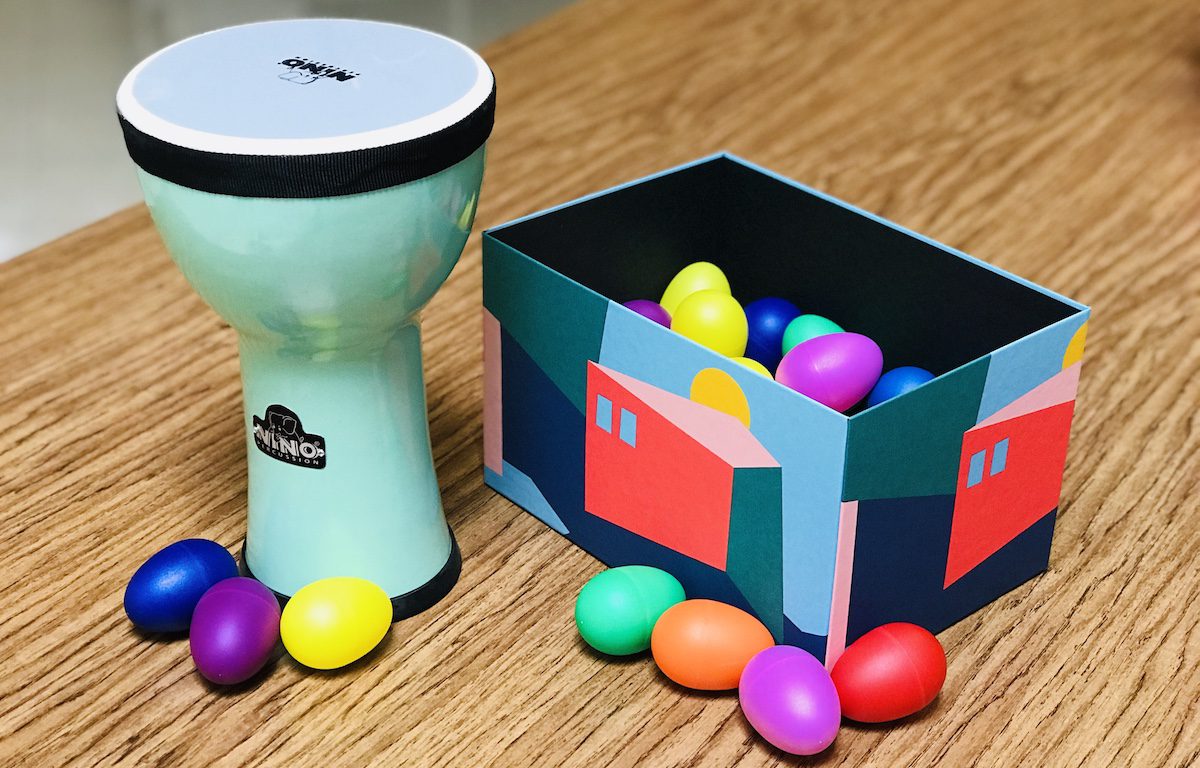Did you know you don’t need a college major in music to use instruments in your classroom? You and your students will find so much joy and practical use from integrating instruments into your classroom.
There are so many awesome classroom instruments that can be used as classroom management tools. You, as the teacher, can use a single instrument to help lead an activity in the classroom or have a class set of simple instruments all your students can use simultaneously. Your student engagement will be through the roof if you cater to your musical-rhythmic learners.
Percussion instruments are the best to start collecting for your classroom. I graduated from college with an art education degree and a percussion minor. Therefore, playing music has always been an obvious connection for me to bring into my classroom. However, even if you have no experience playing an instrument of any kind, you can absolutely shake the maracas, ding a bell, or tap a drum! A lack of musical experience is no excuse.
Here are 5 instruments to integrate into your art room:
1. Egg Shakers
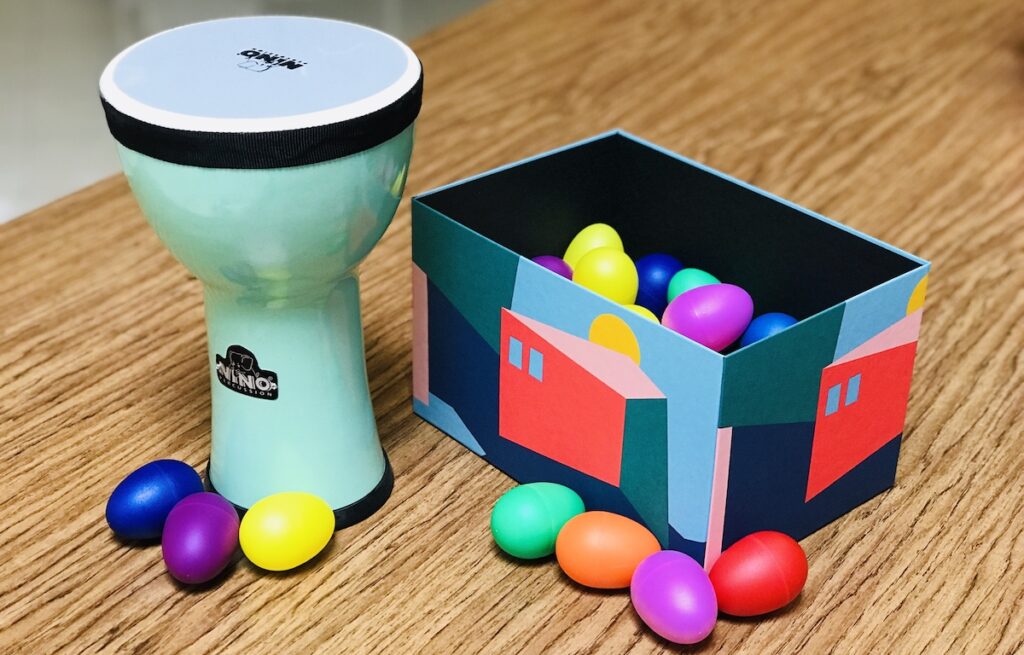
Egg shakers are hand-held, egg-shaped instruments that produce a swooshing and “sh-sh-sh” sound when shaken. When you are introducing a new concept, you can give each of your students an egg shaker and have them repeat parts of the art concepts back to you in rhythmic time. If your egg shakers are rainbow-colored, you can use the colored eggs to practice color theory with your students. For example, “Shake your egg if you are holding a warm color,” or “Make up an egg shaker handshake with a partner who is holding your complimentary colored egg shaker.”
2. Cajon Drum
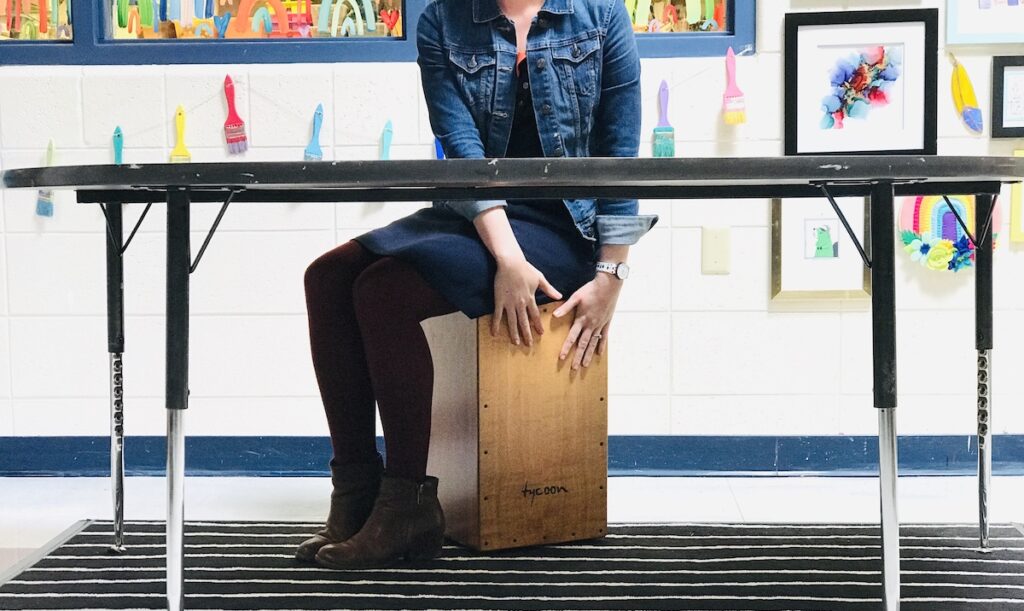
A Cajon drum is a popular percussion instrument. It can make a variety of sounds and, depending on the size, tones. In general, the sound is a “dun dun dun” sound. In Spanish, “cajon” translates to “box” or “crate.” This beautiful instrument comes in many varieties with multiple strike zones to produce different sounds. It is typically played with the player sitting on top of the drum, like a stool, and playing on the front-facing panel of the drum.
I use my Cajon drum as my stool at my demo table. I will play call-and-response patterns on my drum and say, “Ooo, watch me, watch me,” to which the students repeat “Ooo, watch me, watch me.” Or you can use the cajon as an attention-getter when it’s time for students to listen to directions. Check out this advanced Cajon solo!
3. Singing Bowl or Bells
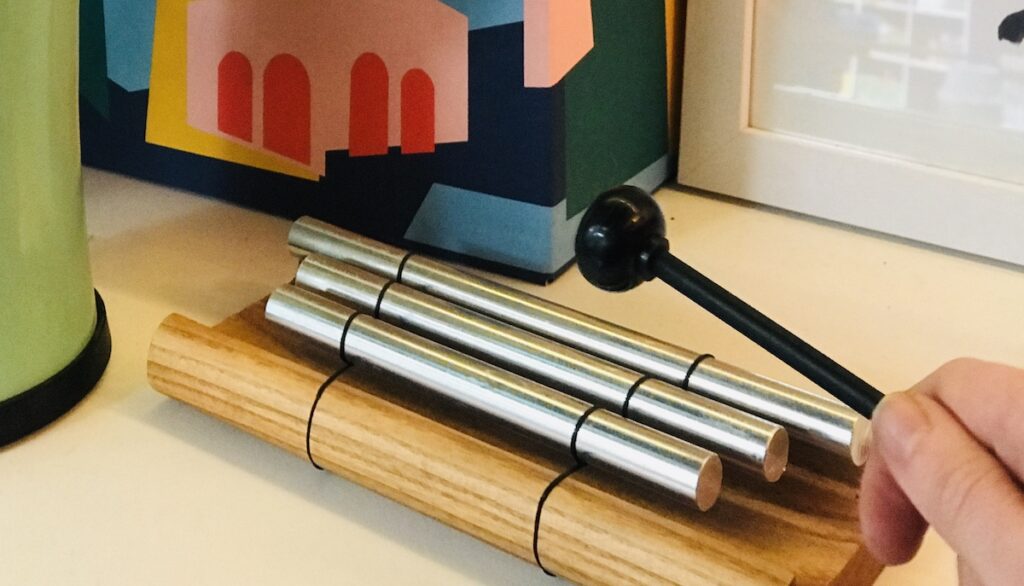
A simple set of xylophone bells can be a great tool to use to get students’ attention during work time. The bell and high-pitched tones are hard to miss! If the bells are rainbow-colored, you can also use this instrument as a way to integrate color theory practice with your students. “Friend, please go play the three primary colored notes to signify it’s time to clean up.”
You can also play a singing bowl which is a bowl-shaped bell-like instrument that resonates with a single note for a long time. We like to use our singing bowl during mindfulness practices. For example, if we are having a meditative practice on the carpet, I’ll ring the singing bowl to indicate the end of our meditation. I’ll say, “When you hear the singing bowl resonate for the fifth time, please quietly get up, stretch and head to your table spot.”
4. Maracas or Hand Drums
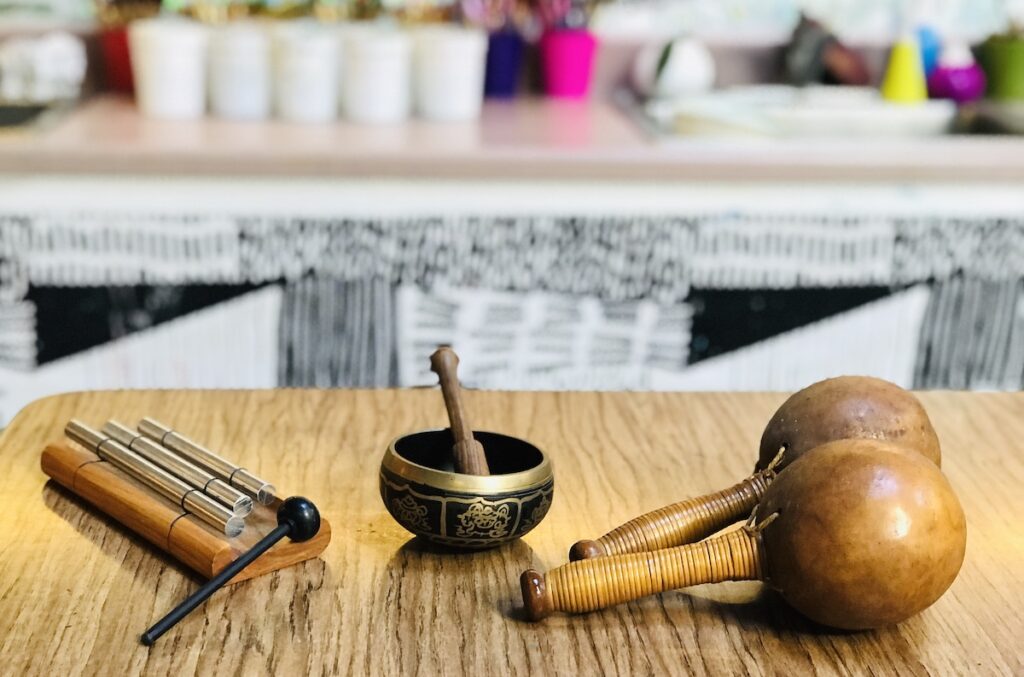
Similar to egg shakers, maracas and hand drums are handheld and with the movement of the hand, make sounds. There are many other kinds of hand drums you can use for call-and-response, or attention getters in your art room. Any small handheld instrument can be simply integrated into techniques you are already using in your classroom for a more memorable, joyful experience. This solid drum would also be really fun for you or your students to use to signify transitions in your classroom.
5. Clapping
So, you’re not ready to purchase instruments, but you still like the idea of integrating sounds into your classroom management. Don’t underestimate the power of clapping! You can have a variety of call-and-responses in your daily routines that involve clapping as signifiers. From Whole Brain Teaching techniques, the teacher calls “Class” and the students respond “Yes” as an attention-getter. You can add claps to that call with, “Class, class, class!” and students clap back “Yes, yes, yes!” A clapping call-and-response can also be used for cleanup. The teacher says, “Friends, it’s time to clean up. *clap-clap* GO!” and students respond, “*clap-clap* OKAY!”
Whether you are an experienced musician or not, adding instruments to your classroom is a great way to increase student engagement. Consider keeping it simple, or go out on a limb and try something outside your comfort zone. Hopefully, a few of these instruments can find a place in your classroom. It can be a fun new musical adventure for you and your students to discover together!
Do you currently use instruments in your art room?
What other sounds can you integrate?
What other instruments would work to add to your classroom management toolbox?
Magazine articles and podcasts are opinions of professional education contributors and do not necessarily represent the position of the Art of Education University (AOEU) or its academic offerings. Contributors use terms in the way they are most often talked about in the scope of their educational experiences.
